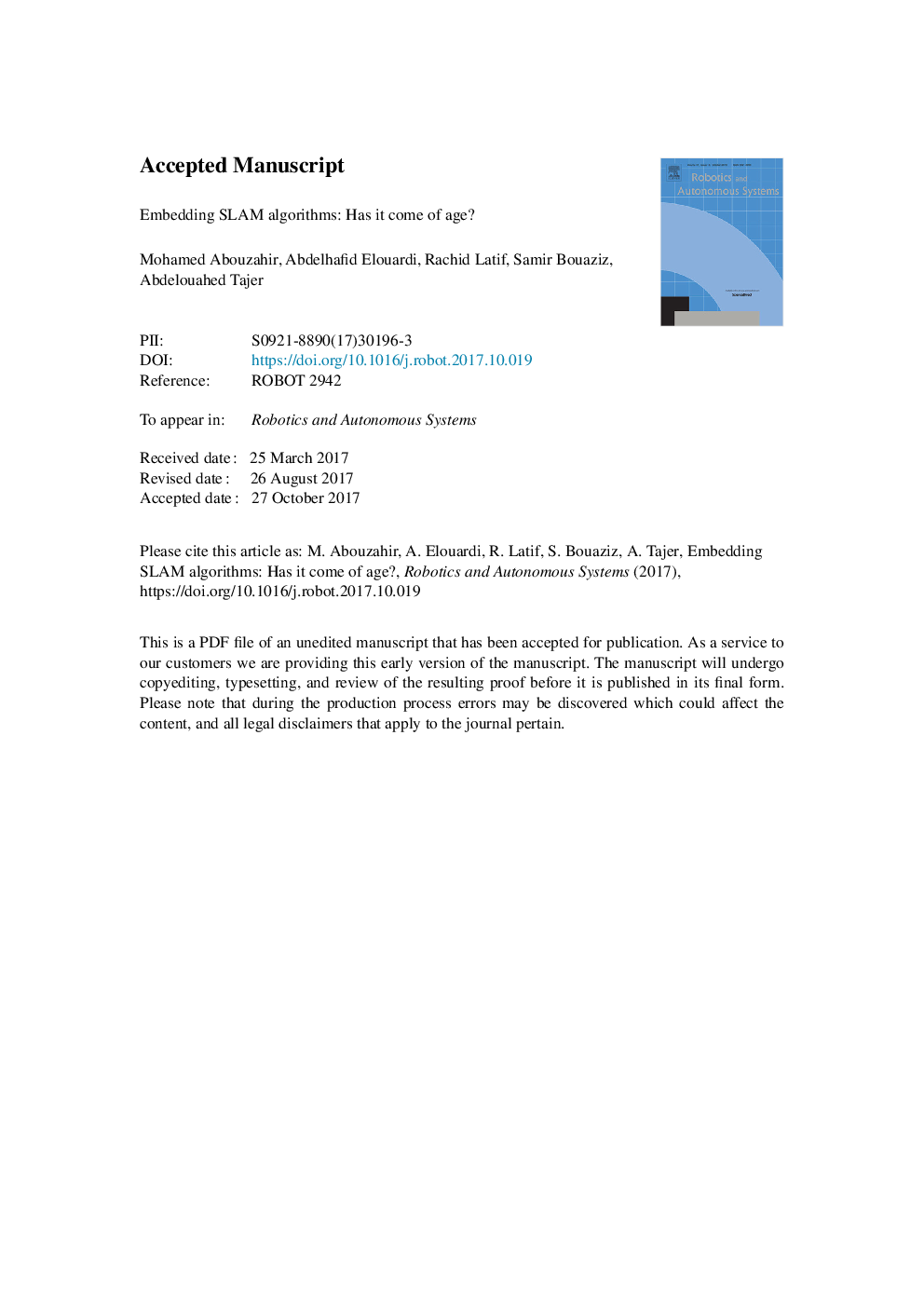| Article ID | Journal | Published Year | Pages | File Type |
|---|---|---|---|---|
| 6867296 | Robotics and Autonomous Systems | 2018 | 27 Pages |
Abstract
Development of Simultaneous Localization and Mapping (SLAM) systems in the era of autonomous navigation and the growing demand for autonomous robots have put into question how to reduce the computational complexity and make use of SLAM algorithms to operate in real time. Our work, aims to take advantage of low-power embedded architectures to implement SLAM algorithms. Precisely, we evaluate the promise held by the new modern low power architectures in accelerating the execution time of SLAM algorithms. Throughout this, we map and implement 4 well-known SLAM algorithms that find utility in very different robot applications and autonomous navigation, on different architectures based embedded systems. We present first a processing time evaluation of these algorithms on different CPU based architectures. Results demonstrate that FastSLAM2.0 allows a compromise between the computation time and the consistency of the localization results. The algorithm has been modified to be adapted to large environments. It is then optimized for parallel implementations on GPU and FPGA. A comparative study of the resulting implementations is given. Our results show that an embedded FPGA based SoC architecture is an interesting alternative for a SLAM algorithm implementation using the hardware-software co-design approach. Hence, the system meets performance requirements of a robot to operate in real-time constraints.
Related Topics
Physical Sciences and Engineering
Computer Science
Artificial Intelligence
Authors
Mohamed Abouzahir, Abdelhafid Elouardi, Rachid Latif, Samir Bouaziz, Abdelouahed Tajer,
